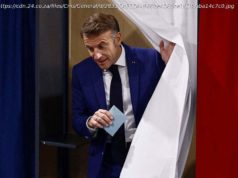The clash between Covington Catholic High School students and Native American elder Nathan Phillips says a lot about privilege in America, according to an expert.
On Friday, students from Kentucky’s Covington Catholic High School encountered a Native American elder at the March for Life in Washington, DC, and appeared to taunt him.
By Tuesday, video of the incident had gone viral; longer videos, giving more context, had been released; one of the students, Nick Sandmann, had issued a detailed statement telling his side of the story; and multiple members of the media had apologized for jumping to conclusions.
In his statement, Sandmann said that he and his fellow students were simply chanting their school spirit chants, with permission from an adult chaperone, to counter insults being directed at them by a group of protesters. He said that when they had been chanting for some time, another group, including elder Nathan Phillips, approached them.
“I believed that by remaining motionless and calm, I was helping to diffuse the situation,” Sandmann said of his interaction with Phillips. “I said a silent prayer that the situation would not get out of hand.”
“I was not disrespectful to Mr. Phillips,” he added during a Wednesday interview with Today’s Savannah Guthrie.
In the wake of Sandmann’s statement and the release of additional video, some have defended the Covington Catholic students. “Far from engaging in racially motivated harassment, the group of mostly white, MAGA-hat-wearing male teenagers remained relatively calm and restrained,” wrote Robby Soave at Reason.
But the increasingly contentious public conversation around the episode may be missing the point.
The smirking silence with which Sandmann confronted elder Nathan Phillips was actually incredibly telling, according to Adam Howard, an education professor at Colby College and the author of Learning Privilege: Lessons of Power and Identity in Affluent Schooling. Sandmann’s expression clearly “communicates that I’m better than you, that I don’t even have enough respect for you to even say anything to communicate,” Howard told me.
The student’s behavior was the embodiment of privilege, Howard said, and nothing that came after the initial viral video changes that.
I reached out to Howard, who previously wrote for Vox about the culture of elite private schools, to ask how that culture might help us understand the March for Life video and its aftermath. In a phone interview, which has been condensed and edited, he said that the video and the reactions to it expose not just the problem of privilege in America but our inability as a society to reckon with that problem.
What did you see when you saw the March for Life video for the first time?
When you saw the young man’s face looking at the elder, and just the smirk, and then having a whole group around him of his fellow classmates, all boys, doing the various things they were doing — chanting, doing tomahawk things, racist behaviors — this is what privilege looks like. This is what he has learned not only from his schooling but also from other sources of education, which include family and the larger national context.






